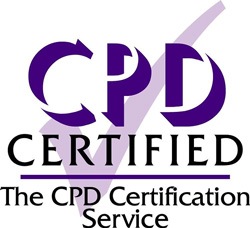The big difference between planning and executing

Over the years, I’ve learnt that planning for an emergency is one thing- executing that plan is another.
This thought went through my mind last week, as I sat, trapped in the accessible wet room of a hotel, with nothing but a towel and a set of headphones, as two members of staff, and a chef they had commandeered, battled ineptly to prize the bathroom door from its hinges.
Let me explain…
I’d travelled to Cambridge the night before as I had arranged to provide a school with disability awareness workshops. To make sure I avoided traffic, and arrived at the school bright and early, I stayed in a local hotel.
Nothing unusual.
However, after taking a shower in the morning I was faced with the sudden dilemma of how to get out of the hotel’s wet room, as the door had become completely jammed shut. Now, as a wheelchair user, one always feels that little bit more vulnerable in these kind of predicaments – but fear not – all will be well, as the hotel has obviously planned for this scenario. My saviour and liberator hung from the ceiling in the form of a bright red cord, telling me I can ‘pull in an emergency’- so, I did.
Then I waited …
There had obviously been a plan for this kind of scenario, but unfortunately executing the plan presented problems. Firstly, (and most worryingly) the ’emergency’ cord, which I’m assuming alerted a member of staff at reception, was not responded to for over 10 minutes, which seemed more like an hour, as I had no clock to measure time by.
A lacklustre staff member finally arrived, and shouted questions through two doors. I, unfortunately, had locked the bedroom door (shocking I know) and the staff explained that they could not open the door as it was bolted and that they didn’t have the manager’s key to the room with them. (Maybe bringing an ‘all access’ key to the door in which there is an emergency occurring, might be something to think of for the future?). By then, I had decided to use the head set I had with me to ring any number I knew off by heart (as my phone was on the bed).
When they finally entered the room, they too were unable to move the bathroom door, and left to gather other staff members and returned with a chef as no one else was currently available. The commotion continued, as they tried to pull the door off the hinges- during which I asked them to pass my phone through a small gap in a hope of rearranging my day and explaining to the school, I was going to be late!
Obviously, this was an accident, and no one was to blame, but if the emergency was of a more serious nature, things may have been different. The fact is, the hotel was chronically understaffed, and if you provide facilities- you need staff.
Ironically, the hotel sent a chirpy email after I checked out asking- “How did we do?”.
In short, accessibility goes beyond the physical aspects you offer. If you provide facilities- you need to be able to ensure they function and are facilitated by the staff around them. An emergency cord may as well be a length of spaghetti if no one is manning the response. And that response also needs to be considered, perhaps even drilled occasionally. Maybe questions like -Who will be available? What should be taken to a room if the emergency cord is pulled? Should we consider taking the master key to the door to the room we are attending? Should we respond to the ‘emergency’ cord as if it IS an emergency?
In fact, this is a lesson we can all learn from. For example, if you have evacuation equipment for people in wheelchairs, how many people are experienced in using it? Are you reviewing, assessing, drilling Personal Emergency Evacuation Plans (PEEPs)? Have you considered the process for specific needs, such as routes and obstacles for people with sight impairments, alternatives to alarms for people who have hearing impairment, and so on.
Accessibility isn’t something you install, or purchase, it doesn’t end with a ramp at the door or large font menu. Most importantly, it’s an awareness, an understanding that some guests, clients, or customers will have additional needs, that if you claim to be accessible, you should help to ensure needs are met.
Most of all, this experience was another reminder that inclusivity must always be led by awareness, as our mindset is the keystone of planning and executing, both of which result in positive change.
CHRIS JAY, MANAGING DIRECTOR, BASCULE DISABILITY TRAINING



